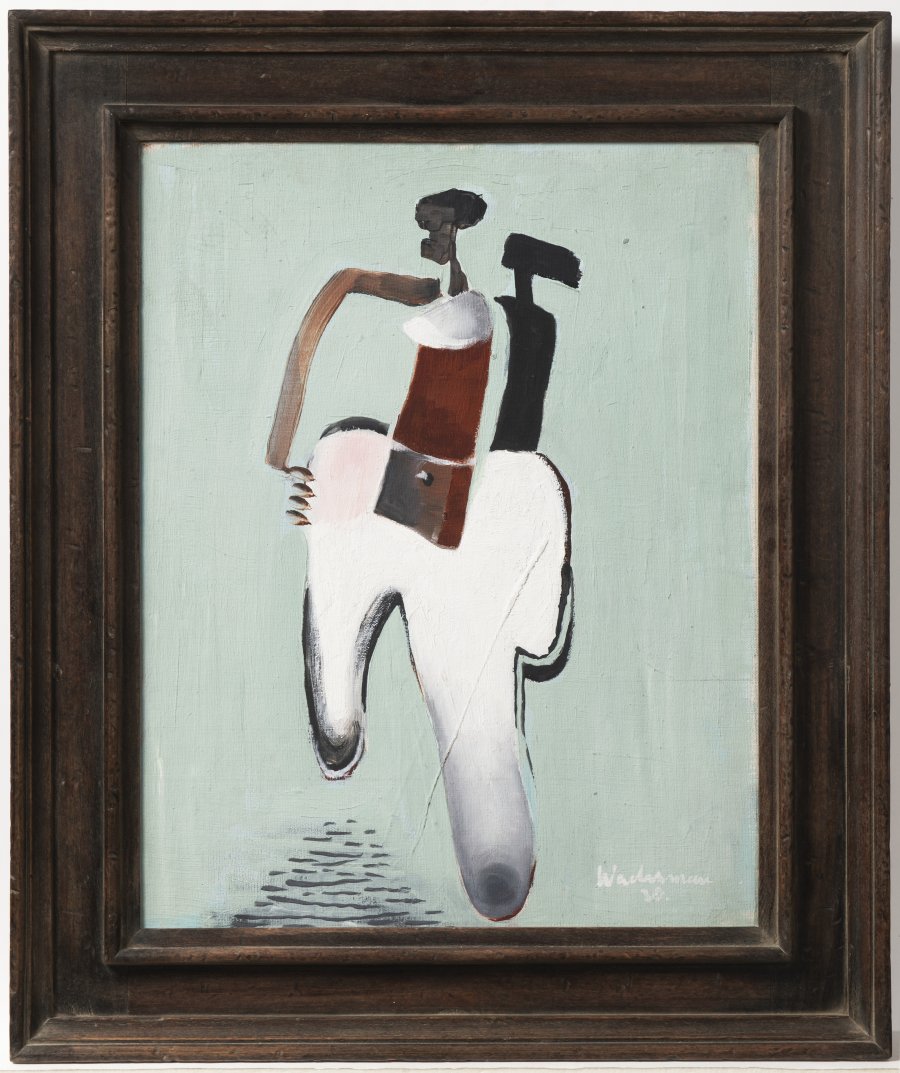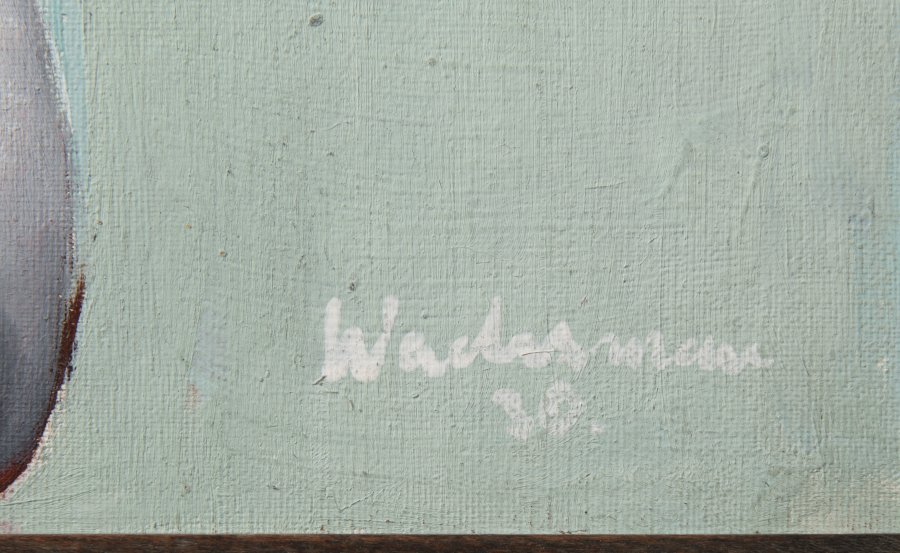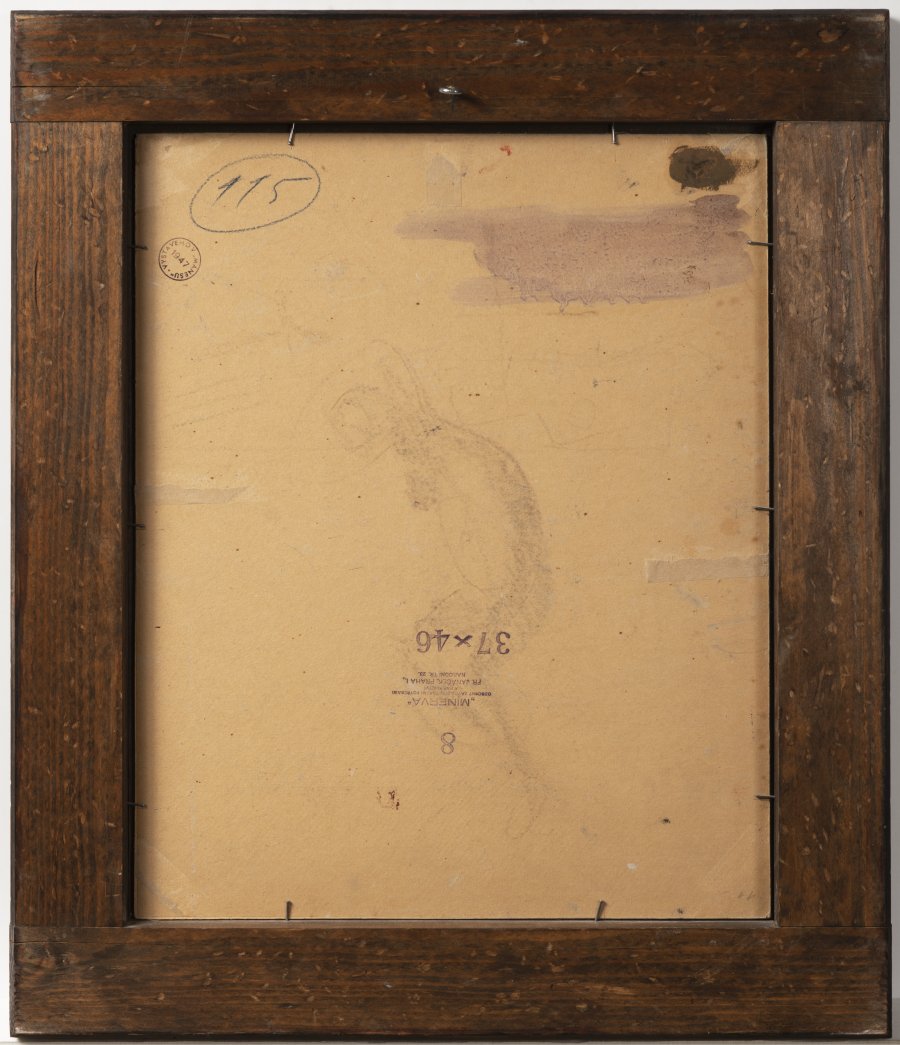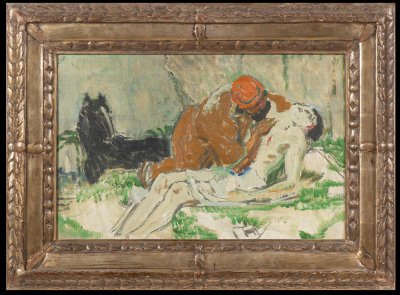750 000 CZK
| 29 412 €
Lot 86
FIGURE
37 x 46 cm (h x w)
Starting price
Price realized
1 400 000 CZK
| 54 902 €
| 54 902 €
price without premium
Oil on paperboard.
Signed lower right: “Wachsman / 30”. Stamp on reverse: “Vystaveno v Manesu 1947, c.115” (exhibited at Manes Gallery 1947, no. 115).
According to the expert opinion prepared by PhDr. Rea Michalová, PhD.: "... 'Figure' is an authentic, suberb and exceptionally rare work by an artist whose work ranks among the most profound and distinctive expressions of the Czech interwar avant-garde. Wachsman was a man of versatile talents – an architect, stage designer and painter. The core of his work lay in painting. He possessed a gift of unusual inventiveness and creative fantasy. In the field of architecture (he studied under Engel and Fanta at the Czech Technical University and Josef Gočár at the Academy of Fine Arts in Prague) he worked as a design engineer at Gočár's studio in 1928–1936. Honzík called him one of the greatest architecture talents the country has ever had, but his name remained concealed under the Gočár studio 'brand'. Painting was fundamentally closer to him because, unlike architecture, it allowed him to create instantly and directly. Wachsman came from a cultivated family. He was related to the Pinkas and Voskovec families and to author Arnošt Procházka, the founder of Moderní Revue. The grammar school on Kremencova Street that Wachsman attended was the strongest focal point of the generation of youth that later came together in the Devětsil art group, which was officially established in October 1920 under the leadership of Karel Teige. Wachsman was one of the founding members of the group. At the famous Spring Exhibition of 1922, he had the largest number of works of the eleven artists on display. Personal conflicts and Teige's new program announcing the end of traditional painting lead to a split from Devětsil and the establishment of the New Group, which essentially finalized the proletarian art program. In 1923–1925 Wachsman created monumental still lifes depicting the simplest of everyday items, dematerialized through the subtle pastel color tones. Following a three-year hiatus dedicated to the study of architecture at the Academy of Fine Arts in Prague and a second trip to Paris (1928), a new creative period for the artist started that was marked by Lyrical and Imaginative Cubism, culminating with his participation in the 1932 Poetry exhibition organized by the Mánes Union of Fine Artists. A number of artistic characteristics connects Alois Wachsman with his colleagues from Devětsil – with Frantisek Muzika, Josef Sima, Jindrich Styrský and Toyen. His work was also based on Cubism, Social Civilism, Poetism, and in the mid-1930s he advanced to Surrealism. Of the entire generation, however, he remained the most faithful to the Civilism of his youth, which to a certain extent remains a common thread throughout his later works. 'Figure' is a brilliant execution of Lyrical Cubism, in which Wachsman liberally built on the example set by Picasso to achieve a radically reduced, symbol-based form. Vitezslav Nezval absolutely accurately noticed that Wachsman's compositions are reminiscent of 'painted sculptures' or a sort of abstracted figurative skeleton. I believe that in addition to two proven exhibitions, 'Figure' was also shown at the artist's solo exhibition at Aventinum Mansard in the spring of 1931. A similarly conceived abstract standing figure transformed into a simple symbol is reproduced on the cover of the catalogue. 'Figure' is a rare collectable work that presents the culmination of the artist's artistic direction from the late 1920s. It is an exemplary display of his intrinsic tendency to exaggeration and artistic experimentation, which make him one of the most interesting artists
of the first half of the 20th century."
Exhibited at: Alois Wachsman 1898–1942, Posthumous Exhibition, March 1947, Mánes Union of Fine Artists, cat.no. 29. Alois Wachsman, Prague City Gallery, Municipal House, December 1970 – January 1971, cat.no. 35.






